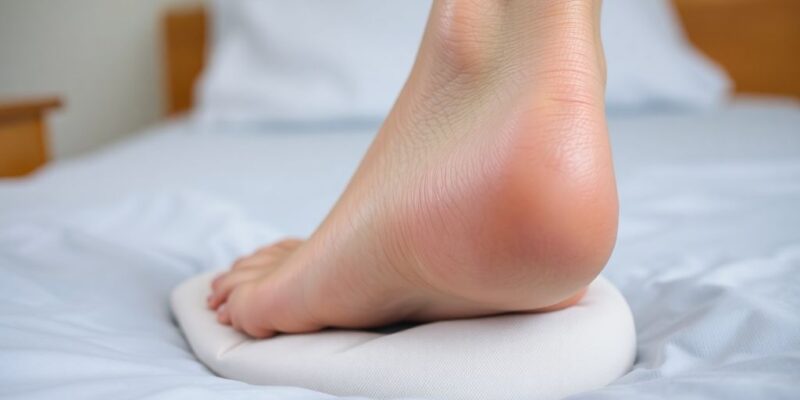Bed sores, also known as pressure ulcers, are a serious concern in nursing homes. They can cause significant pain and discomfort for residents, and they also increase the risk of infection and other complications. Understanding what causes these sores and who is most at risk is the first step in preventing them.
Identifying Vulnerable Residents to Bed Sores
Certain residents are more likely to develop bed sores than others. It’s important to identify these individuals early so that preventive measures can be put in place. Factors that increase the risk include:
- Advanced age: Older adults generally have thinner skin and less subcutaneous fat, making them more susceptible to pressure damage. Bedsores in nursing homes are more common in the elderly.
- Medical conditions: Certain illnesses, such as diabetes, vascular disease, and neurological disorders, can impair circulation and sensation, increasing the risk.
- Immobility: Residents who are confined to a bed or chair for extended periods are at higher risk because they are unable to shift their weight and relieve pressure on bony prominences.
- Incontinence: Exposure to moisture from urine or feces can weaken the skin and make it more prone to breakdown.
Impact of Immobility and Pressure on Skin Integrity
Immobility is a major contributor to bed sore development. When a person is unable to move freely, constant pressure on certain areas of the body restricts blood flow. This lack of blood flow deprives the skin and underlying tissues of oxygen and nutrients, leading to tissue damage and eventually, a bed sore. Prolonged pressure, especially over bony areas like the hips, heels, and tailbone, is particularly damaging. To mitigate this, regular repositioning is essential.
Nutritional Deficiencies and Their Role in Bed Sore Development
Good nutrition is vital for maintaining healthy skin and promoting wound healing. Residents who are malnourished or dehydrated are at increased risk of developing bed sores, and their existing sores may take longer to heal. Key nutrients for skin health include:
- Protein: Needed for tissue repair and regeneration.
- Vitamins: Vitamin C is important for collagen synthesis, and vitamin A supports skin cell growth.
- Minerals: Zinc plays a role in wound healing.
- Hydration: Adequate fluid intake is essential for maintaining skin elasticity and preventing dryness. Neglect, such as failing to reposition patients, can lead to infections in nursing homes from bed sores.
Implementing Effective Prevention Strategies for Bed Sores in a Nursing Home
Preventing bed sores, also known as pressure ulcers, is super important in nursing homes. It’s way better to stop them from happening in the first place than to try and treat them later. It takes a team effort and a solid plan to keep residents safe and comfortable. Here’s how nursing homes can really step up their game when it comes to prevention.
Regular Skin Assessments and Documentation Protocols
Okay, so first things first: you gotta check the residents’ skin regularly. I mean, really look at it. We’re talking head to toe, front and back. And not just once in a blue moon – it needs to be part of the daily routine. The goal is to catch any early signs of trouble before they turn into full-blown sores. Make sure to document everything you see. Every little change, every red spot, everything. Good documentation helps everyone stay on the same page and track progress (or lack thereof). It’s also a good idea to use a standardized assessment tool. This makes sure everyone is looking for the same things and using the same language.
Pressure Redistribution Devices and Their Application
Next up, let’s talk about gear. There are tons of devices out there designed to take the pressure off vulnerable areas. We’re talking special mattresses, cushions, and even heel protectors. It’s not a one-size-fits-all situation, though. You need to figure out what works best for each resident based on their needs and risk factors. For example:
- Alternating pressure mattresses are great for people who spend most of their time in bed.
- Foam cushions can help redistribute pressure when someone is sitting in a chair.
- Heel protectors can prevent pressure on the heels, which are a common spot for sores.
Make sure everyone knows how to use these devices correctly. A fancy mattress won’t do much good if it’s not set up right.
Optimizing Resident Repositioning Schedules
Last but not least, repositioning is key. Think of it like this: if you sit in one spot for too long, you get uncomfortable, right? Well, the same thing happens to residents, but they might not be able to move on their own. Regular repositioning, ideally every two hours, is crucial. This helps to redistribute pressure and prevent sores from forming. It’s not just about turning someone from their back to their side, though. You need to use pillows and wedges to support their body and keep pressure off bony areas. And again, document everything! Keep track of when you repositioned someone and how you did it. This helps ensure that everyone is doing their part to keep residents comfortable and safe. It’s a simple thing, but it can make a huge difference. Also, make sure to check the protein intake of the residents to help with skin health.
Nutritional Management for Preventing and Healing Bed Sores in a Nursing Home
Assessing Nutritional Status and Dietary Needs
Figuring out what a resident needs, nutritionally, is the first step. It’s not just about calories; it’s about understanding their overall health, any existing conditions, and how those things impact their ability to heal. We look at things like weight changes, lab results, and their ability to eat. Individualized dietary plansdietary plans are key. It’s not one-size-fits-all. We need to consider their preferences, cultural background, and any swallowing difficulties they might have.
Importance of Protein and Vitamin Intake for Skin Health
Protein is super important. It’s the building block for tissue repair. Think of it like this: if you’re trying to fix a wall, you need bricks. Protein is the brick for skin. Vitamins, especially C and A, also play a big role. Vitamin C helps with collagen production, which keeps skin strong. Vitamin A supports cell growth. Zinc is another important one, it helps with wound healing. We make sure residents get enough of these through their diet, and sometimes supplements are needed.
Hydration Strategies to Support Tissue Integrity
Dehydration can really mess with skin health. When skin is dry, it’s more prone to breakdown. We encourage residents to drink enough fluids throughout the day. This can be tricky, especially if they have trouble swallowing or aren’t thirsty. We offer fluids regularly, keep water within easy reach, and consider things like flavored water or juicy fruits to make it more appealing. Monitoring fluid intake is also important. We keep track of how much they’re drinking to make sure they’re getting enough. Adequate hydrationAdequate hydration is a simple, but often overlooked, part of bed sore prevention.
Advanced Treatment Modalities for Existing Bed Sores in a Nursing Home
Once bed sores have developed, a nursing home must implement advanced treatment modalities to promote healing and prevent further complications. The selection of treatment depends on the stage and severity of the ulcer, as well as the resident’s overall health status. It’s not a one-size-fits-all situation, and what works for one resident might not work for another.
Wound Care Protocols and Dressing Selection
Effective wound care is paramount in treating bed sores. This involves:
- Regular cleansing of the wound bed to remove debris and bacteria.
- Selecting appropriate dressings to maintain a moist wound environment, which promotes healing. There are so many options, from hydrocolloids to alginates, and each has its own pros and cons.
- Protecting the surrounding skin from maceration. You don’t want the healthy skin around the wound to break down too.
The choice of dressing should be based on the wound’s characteristics, such as the amount of exudate and the presence of infection. It’s a bit of a balancing act to find the right one.
Debridement Techniques for Non-Viable Tissue
Debridement, the removal of dead or damaged tissue, is often necessary to facilitate healing. There are several debridement methods:
- Sharp debridement: Using a scalpel or scissors to cut away the dead tissue. This is usually done by a trained professional.
- Enzymatic debridement: Applying topical enzymes to break down the dead tissue. It’s a slower process, but less invasive.
- Autolytic debridement: Using the body’s own enzymes to break down the dead tissue under a moisture-retentive dressing. This is the gentlest method.
Debridement helps to create a healthy wound bed, allowing new tissue to grow. It’s not always pretty, but it’s a necessary step. For Stage 4 bed sores, which are the most severe, this is often a critical step.
Infection Control and Antibiotic Management
Infection is a serious complication of bed sores, and it can significantly delay healing. Signs of infection include:
- Increased pain
- Redness and swelling
- Purulent drainage
- Fever
If an infection is suspected, a wound culture should be obtained to identify the causative organism. Antibiotics may be necessary to treat the infection, but they should be used judiciously to prevent antibiotic resistance. Infection control measures, such as hand hygiene and proper wound care techniques, are also essential to prevent the spread of infection. For deep wounds like Stage 4 bed sores, infection can be a major concern, requiring aggressive treatment.
The Role of Staff Training and Education in Bed Sore Management
Comprehensive Training Programs for Nursing Staff
Effective staff training is really important for preventing and managing bed sores. It’s not just about knowing the basics; it’s about consistently applying that knowledge in daily care. A good training program should cover a few key areas:
- Early detectiontraining framework is a must. Staff need to know how to spot the first signs of a bed sore, even if it’s just a slight change in skin color or texture.
- Proper positioning and repositioning techniques are also key. This includes knowing how often to move residents and how to use pillows and other devices to relieve pressure.
- Wound care is another big one. Staff should be trained on how to clean and dress wounds, and when to escalate concerns to a wound care specialist.
Promoting Interdisciplinary Collaboration in Bed Sore Care
Bed sore management isn’t a one-person job. It requires a team effort. This means nurses, doctors, dietitians, and other healthcare professionals need to work together. Regular meetings and clear communication channels are essential. For example:
- Nurses can share their observations about a resident’s skin condition.
- Dietitians can assess nutritional needs and recommend dietary changes to support healing.
- Doctors can prescribe medications and other treatments as needed.
When everyone is on the same page, it’s easier to provide the best possible care.
Continuous Education on Best Practices for Bed Sores in a Nursing Home
Best practices for bed sore prevention and treatment are always evolving. That’s why continuous education is so important. Staff need to stay up-to-date on the latest guidelines and research. This can include:
- Attending workshops and conferences.
- Reading professional journals.
- Participating in online training modules.
Also, it’s important to make sure that caregiver confidence is high. When staff feel confident in their abilities, they’re more likely to provide effective care. Regular refresher courses and opportunities for skill development can help boost confidence and improve outcomes.
Legal and Ethical Considerations Regarding Bed Sores in a Nursing Home
Understanding Regulatory Compliance and Standards of Care
Nursing homes operate under a web of regulations designed to protect residents, and bed sores are a key area of concern. These rules come from both the federal and state governments, and they set the minimum standards for care. Facilities must follow these standards to avoid penalties, such as fines or even the loss of their license.Regulatory compliance isn’t just about avoiding trouble; it’s about providing the best possible care for residents. It’s important to know that nursing home neglect differs from abuse, often stemming from carelessness rather than intent.
Resident Rights and Advocacy in Bed Sore Prevention
Residents have rights, plain and simple. These rights include the right to be free from neglect and to receive care that prevents bed sores. If a resident develops a bed sore, it can be a sign that these rights have been violated. Advocacy groups and ombudsmen are there to help residents and their families understand these rights and to speak up if something isn’t right. It’s about making sure everyone knows what they’re entitled to and has the support to get it. Here are some key resident rights related to bed sore prevention:
- The right to a safe and clean living environment.
- The right to receive proper medical care and treatment.
- The right to be free from neglect and abuse.
Documentation Requirements for Legal Protection
If a nursing home gets sued over a bed sore, documentation is going to be a big deal. Detailed and accurate records can be a facility’s best defense. This includes everything from initial skin assessments to daily wound care notes. If it isn’t written down, it didn’t happen, as they say. Good documentation shows that the facility followed proper protocols and did everything it could to prevent or treat the bed sore. Nursing homes can face legal action if residents develop pressure ulcers due to inadequate prevention. Here are some key elements of proper documentation:
- Regular skin assessments with detailed descriptions.
- Implementation of preventative measures, such as repositioning schedules.
- Detailed wound care protocols and progress notes.
Family Involvement and Communication in Bed Sore Care
Educating Families on Bed Sore Prevention and Treatment
It’s super important that families understand how to prevent and treat bed sores. Nursing homes should provide clear, easy-to-understand information about the causes of bed sores, risk factors, and what steps are being taken to protect their loved ones. This might include handouts, workshops, or one-on-one meetings with staff. Families who know what to look for can be extra eyes and ears, helping to catch potential problems early. Make sure they know about nursing home care and what to expect.
Establishing Open Communication Channels with Nursing Staff
Open communication is key. Families need to feel comfortable talking to the nursing staff about any concerns they have regarding their loved one’s skin health. Nursing homes should have systems in place to facilitate this, such as regular check-in calls, family meetings, or a dedicated point of contact for families. It’s also helpful to have clear protocols for reporting potential issues. If a family member notices something, they should know exactly who to tell and what information to provide. This helps ensure that concerns are addressed quickly and effectively. It’s also important to discuss the possibility of legal action if neglect is suspected.
Collaborating on Care Plans for Residents with Bed Sores
When a resident develops a bed sore, it’s crucial for the family to be involved in the care plan. This means working with the nursing staff to understand the treatment plan, asking questions, and providing input based on their knowledge of their loved one’s preferences and needs. Families can offer valuable insights into things like preferred repositioning methods, dietary preferences, and comfort measures. This collaborative approach helps ensure that the care plan is tailored to the individual resident and that everyone is on the same page. Active participation from the family can significantly improve the resident’s comfort and healing process. The care plan should include:
- Regular updates on the resident’s progress.
- Opportunities for the family to provide feedback.
- Clear explanations of any changes to the treatment plan.








Comments